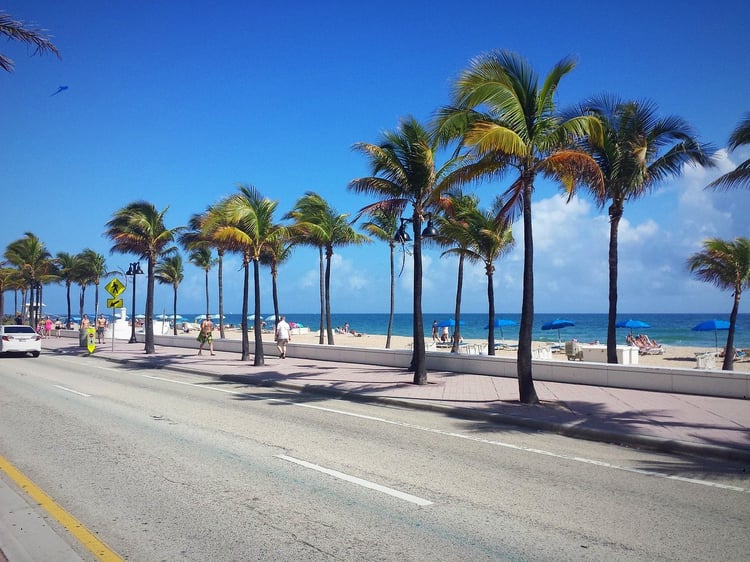Florida Student Loans in 2024: What You Need to Know
You might not believe it, but filling out your college application is likely the easiest part of the entire school search process. Because now that you’ve been accepted, it’s time to figure out where the money is going to come from to pay for everything.
The good news is Florida student loans can help bridge this financial gap, creating opportunity in higher education where there may not have been otherwise.
Students and families pay for college in many different ways, but almost all can receive some kind of financial aid. Federal, state and private student loans are all available to Florida students, in addition to unique financial aid programs offered through the state. Unlike many scholarships and grants, student loans are not based on merit, nor does a student need to demonstrate financial duress to qualify for every loan.
Many students and families miss out on college because they assume they can’t afford it. While college can be expensive, don’t assume you can’t pay for it until you know the facts. To better understand student loans in Florida and how they can meet your financial needs, explore the guide below to gain information about state-specific student resources, the importance of FAFSA, and choosing a loan that fits your educational path.
How to Apply for Student Loans in Florida

Filling out the Free Application for Federal Student Aid, better known as the FAFSA, is one of the most important steps Florida students and their families can take to pay for college. The FAFSA is used nationwide and is a mandatory step to determine the kind of federal aid a student receives. Additionally, it opens the door to a variety of financial aid opportunities.
The Florida Department of Education’s Office of Student Financial Assistance (OSFA) (is your “go to” site for funding your education in the state of Florida. You will find information about FAFSA, scholarships, grants and student loans on their site.
Financial aid options available through the FAFSA include:
- Direct Subsidized and Unsubsidized Loans
- Perkins Loan
- Direct PLUS Loan
- Federal grants
- Some state grants
- Federal Work-Study Program
To guide students and their families through the application process, we created this interactive FAFSA guide that walks you through the application steps and how to answer each questions the best way possible.
Institutional Student Loans

Some Florida colleges offer institution-specific student loans that are meant to help bridge the financial gap.
They are called institutional loans because the institution (the college) is the creditor. Since they are campus-specific, the interest rates and repayment terms vary. The financial aid office at your school will be able to tell you if they have these loans available.
The University of Florida (UF) offers loans to students who have completed the FAFSA and who are ineligible for federal loans or have need remaining after federal eligibility has been exhausted.
UF student loans include:
- UF Long-Term Loans. These loans are for students who aren’t eligible for federal loans, or who have additional financial needs beyond federal loans. Award amounts vary from $500 to $3,500 annually and interest rates range from 4% to 9%. You must be enrolled at least half-time and maintain satisfactory academic progress. The long-term loans require a cosigner and you have 10 years for repayment (which begins six months after graduation).
- UF Short-Term Loans. If you’re enrolled half-time, have a valid repayment source, and need temporary, emergency funds to cover education expenses, you might want to consider a short-term loan. You can borrow up to $1,000 if tuition is paid or deferred. The loan must be repaid either when the repayment source is received or by the established repayment deadline.
Nursing Student Loan Forgiveness
The Florida Legislature established the Nursing Student Loan Forgiveness Program (NSLFP) to encourage nurses to seek employment in areas of the state where critical nursing shortages exist. The program provides funds to assist in the repayment of nursing education loans.
To be eligible for this program, you must be working full-time in Florida at one of the designated employment sites. You must also be a licensed LPN, RN, or ARNP.
The program may make nursing education student loan repayments of up to $4000 per year for a maximum of four years. The application window happens four times per year.
The Florida Bar Foundation Loan Repayment Assistance Program
The Florida Bar Foundation supports a Loan Repayment Assistance Program (LRPA) for lawyers employed at Florida legal aid and legal services organizations. They provide benefits of $5,000 per year in the form of a loan to help you repay your student debt. That loan is then forgiven annually, as long as you remain employed full-time or part-time for 12 months at an eligible foundation.
It’s truly a win-win. The best part: when the first loan is forgiven, you can get another one as long as you keep working as a staff attorney at one of the foundation’s partner organizations.

Student Aid and Debt
Being a college student in Florida could mean graduating with less debt than most other students across the country. In 2016, Florida ranked 45 out of 50 states for the amount of student loan debt per student.
Pretty impressive, right? But there’s more. Even though 52% of graduates from Florida schools have outstanding student loan debt, the average is only $24,461. This is much lower than the national average of $37,172.
With a strong access to financial aid, scholarships, and grant programs, Florida residents and out-of-state students have a vast amount of educational opportunities at their fingertips.
Students in Florida Awarded Student Loans
Federal Student Loans
The U.S. Department of Education offers two federal student loan programs: the Direct Loan Program and Federal Perkins Loan Program. Eligibility for both programs is determined by a students FAFSA application.
1. The Direct Loan Program is the largest federal student loan program offering four different types of loans for students with and without financial needs. Under this program, the U.S. Department of Education is your lender.
- Direct Unsubsidized Loans: Loans offered to undergraduate, graduate, and professional students. Financial need is not a requirement to be eligible for this loan.
- Direct Subsidized Loans: The Direct Loan option is available to students who demonstrate financial need and helps cover the costs of higher education at a college or career school. Unsubsidized and subsidized student loans are also referred to as Stafford Loans.
- Direct PLUS Loans: These include the Parent PLUS Loan and Grad PLUS Loan. These options are available to graduate or professional students and parents of dependent undergraduate students. The borrower should not have an adverse credit history and the maximum award of the loan is the cost of attendance minus other financial aid awards which is determined by the school.
- Direct Consolidation Loans: This option allows students to combine all eligible federal student loans into a single loan with a single loan servicer.
2. The Federal Perkins Loan Program is offered to students with exceptional financial need. Under this program, the school is your lender.
Federal students loans offer options for students of all socioeconomic backgrounds and generally speaking, are a safe bet offering good interest rates and repayment options for student borrowers.
How to Apply for A Private Student Loan
If you’re in need of additional financial aid, consider taking out a private loan to acquire the remaining funds you need for your college education. Before taking out any private loans, play around with our free NitroScore tool to get a better idea of the size of loan needed, and which of our highly vetted loan partners can offer you the best rate.
The tool will ask you to enter a college and major into the boxes provided. It will use that information to calculate your total costs, salary after graduation, and potential loans needed. From there, you will receive a score that tells you how easy those loans will be to repay based on your projected salary. Further customize your results by including information about scholarships, grants and savings. You can also compare different college or major combinations to get a better idea about which options fit your financial situation.
Recommended Student Loan Lenders
Additional Nitro Recommended Student Loan Lenders
| Lender | Rates (APR) | Loan Types | Terms | Eligible Degrees | Eligible Loans | |
|---|---|---|---|---|---|---|
 |
4.15% - 15.70%1 | Variable & Fixed | 10 - 15 years | Undergrad | Students | 
|


